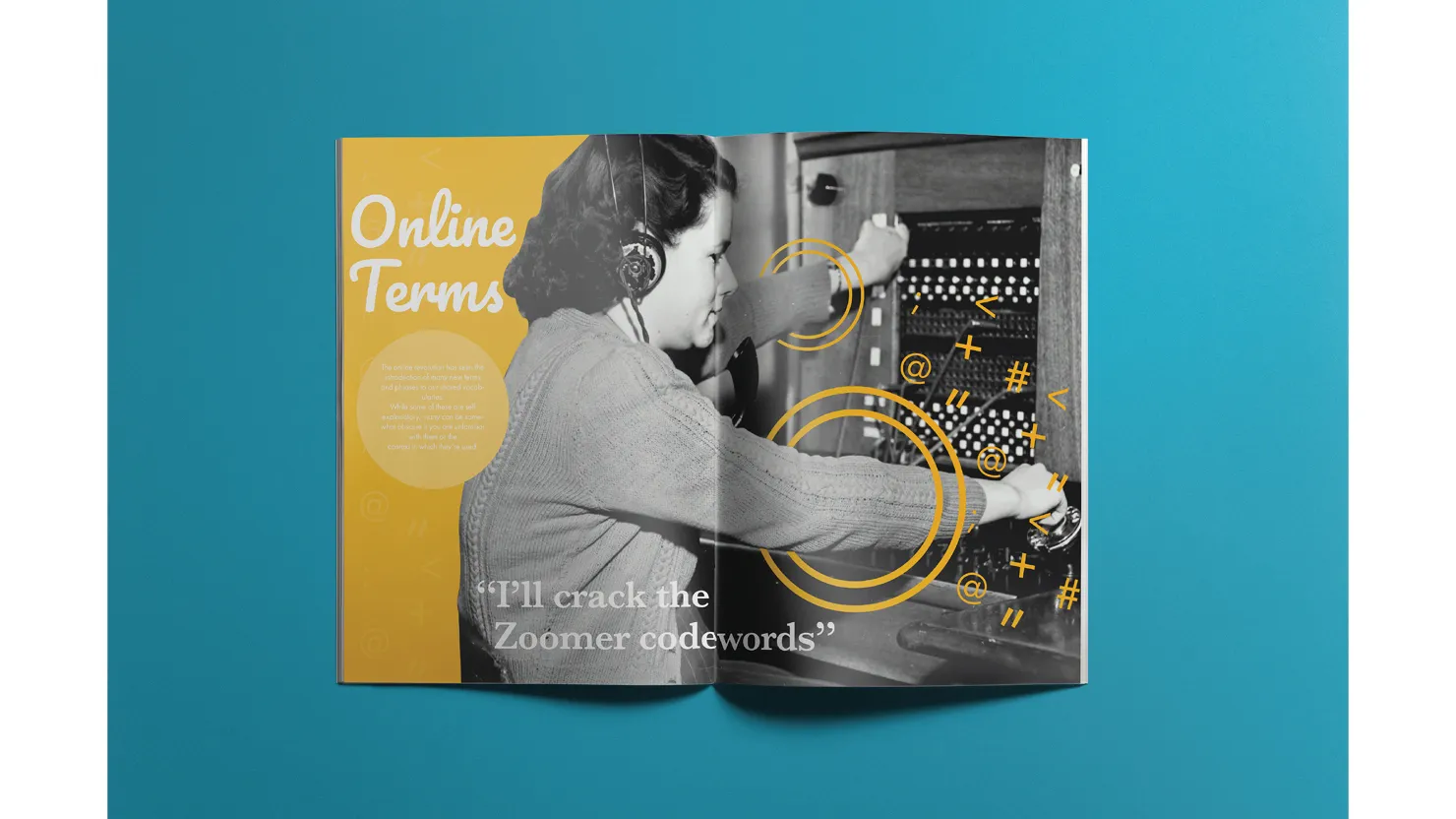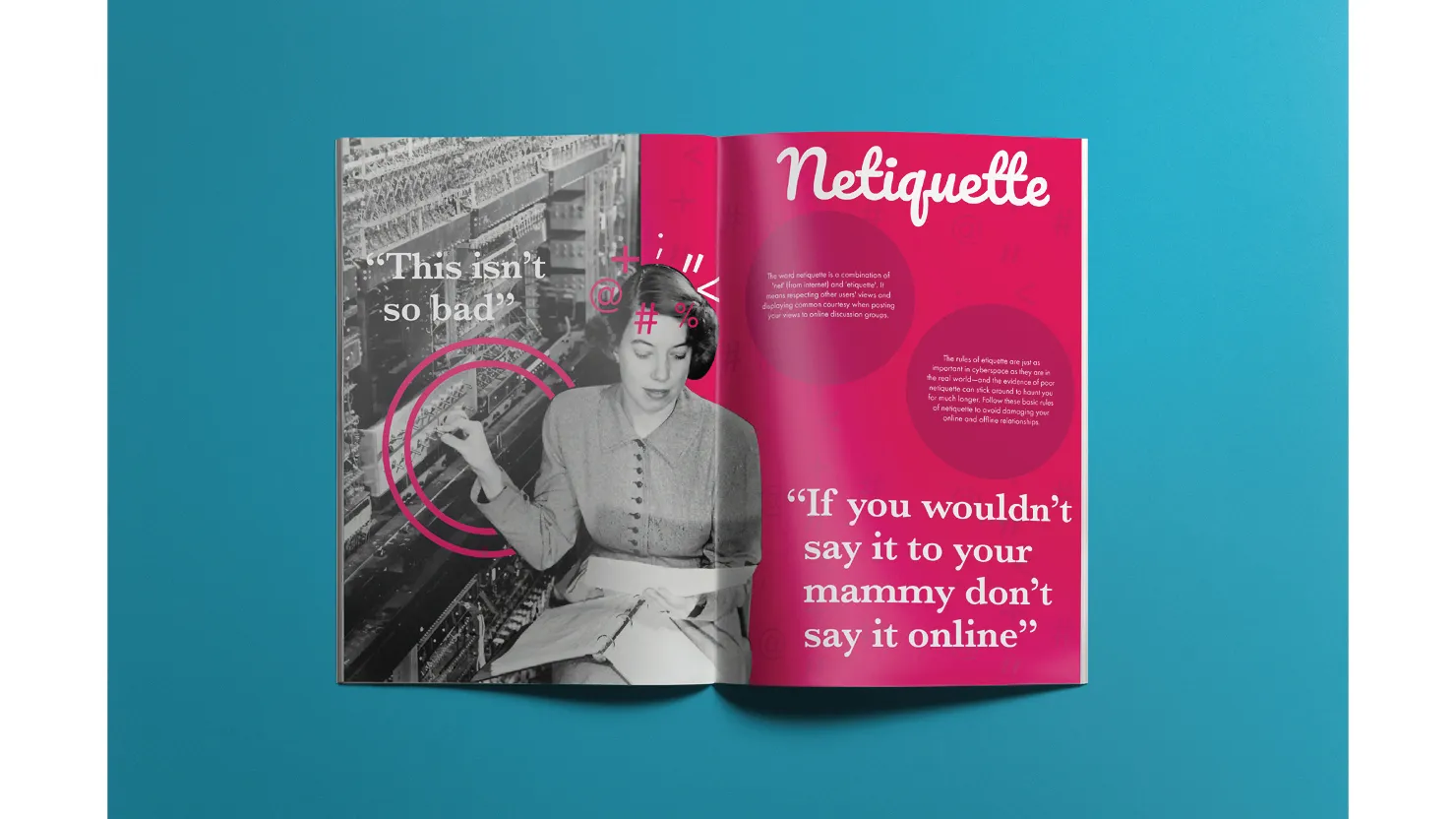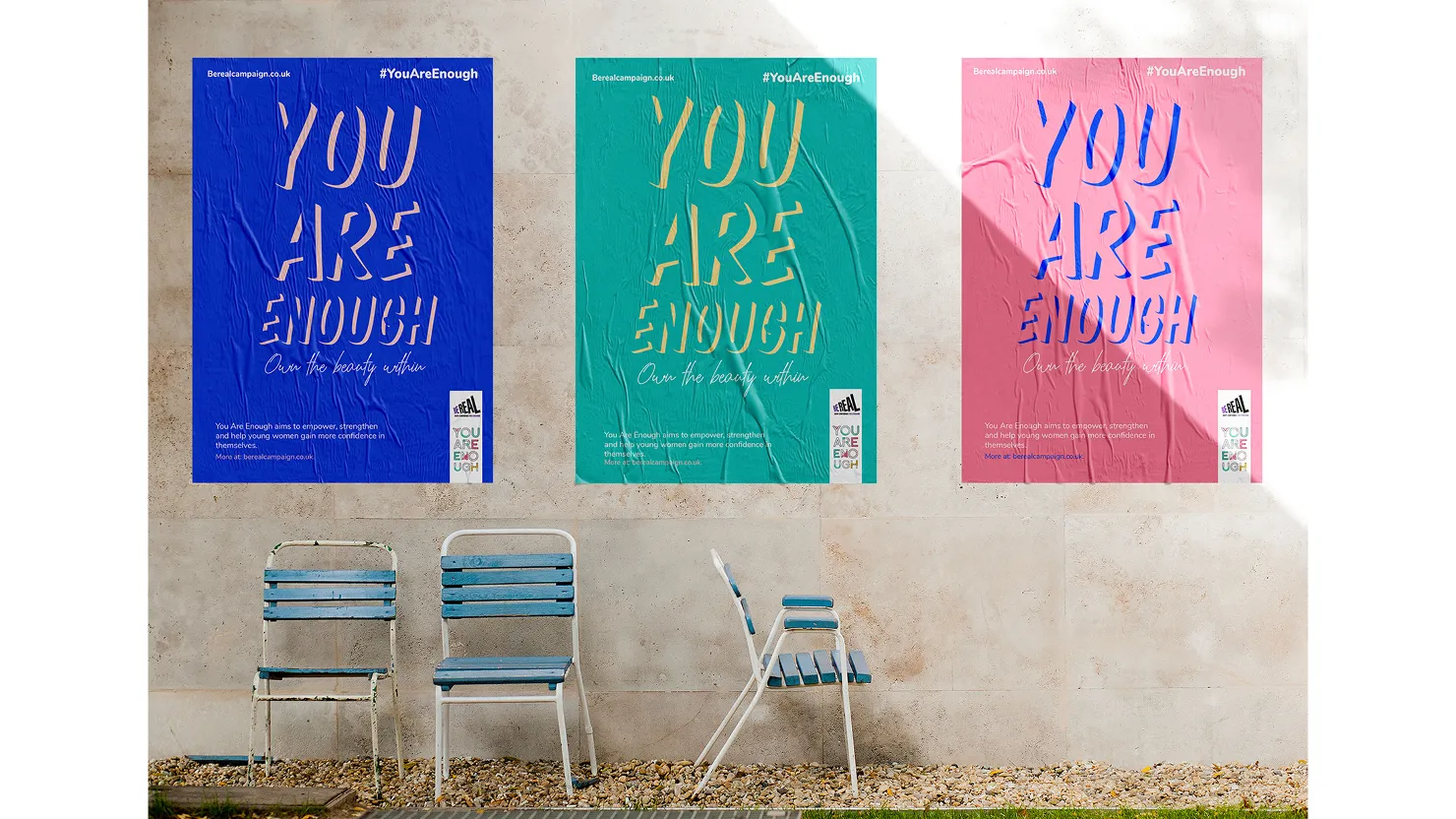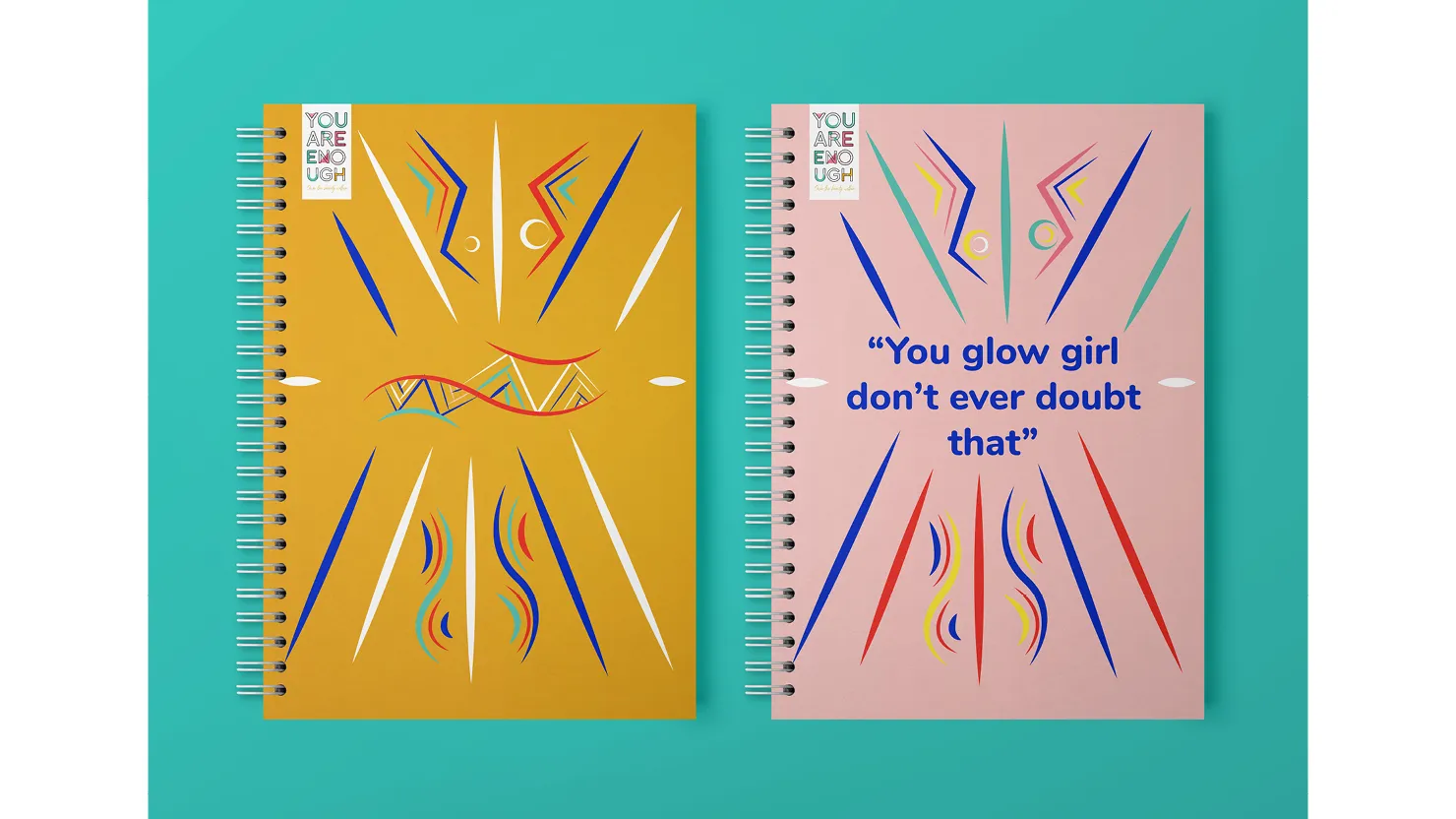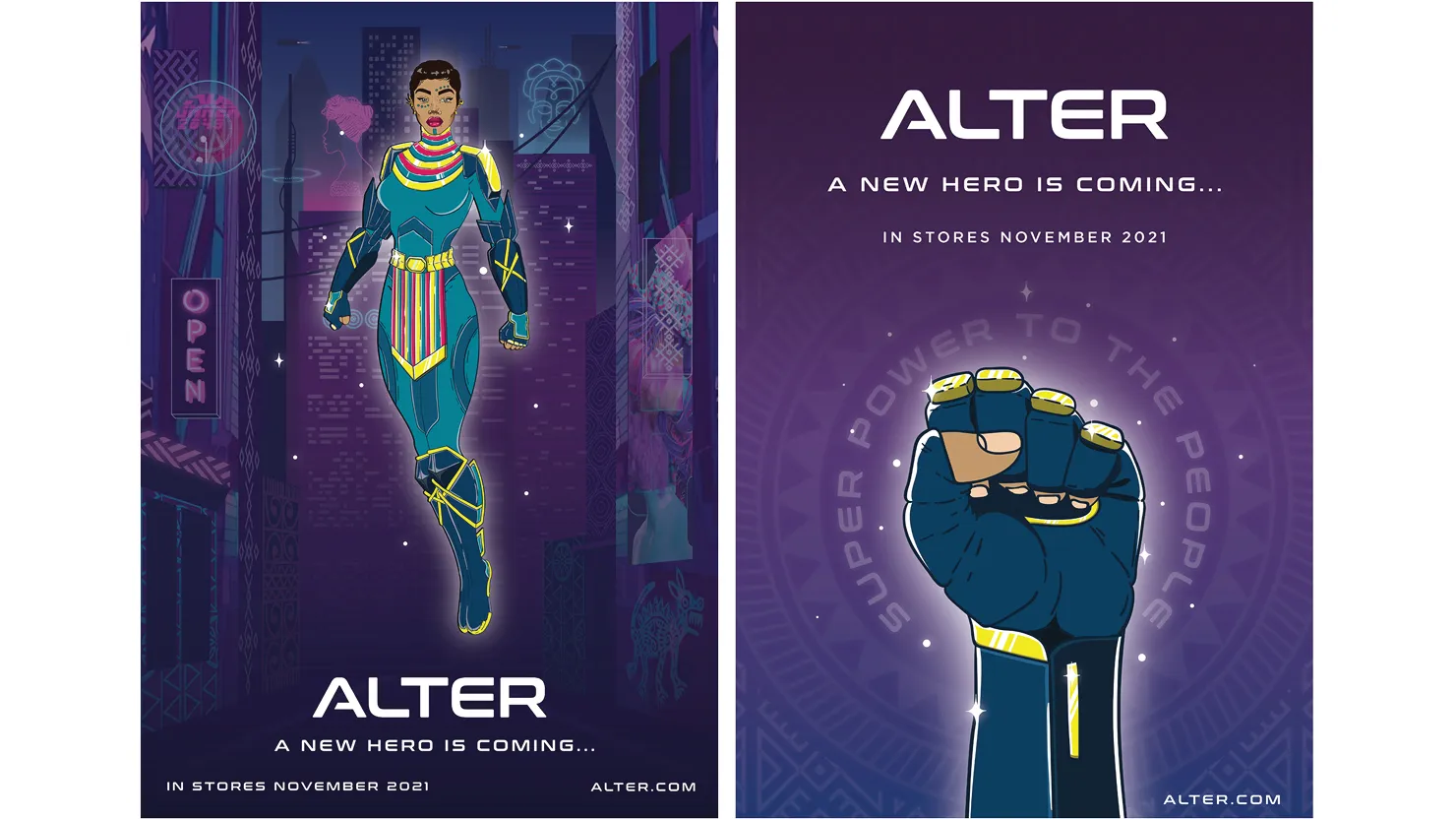BA in Graphic Communication Design

Course Overview
If you’re fascinated by words and pictures, bursting with ideas, and a natural problem solver then this course is for you.
Discover how Graphic Design is used to create visually striking imagery to communicate an expression of ideas and experiences using images, words , photographs, graphic elements and digital tools to a target market.
Why Study Graphic Communication Design at Griffith
Our BA in Graphic Communication Design is a three-year level 7 degree course available on a full-time basis. This challenging degree will teach you how to continuously respond with creativity, and create innovative visuals while developing a keen understanding of consumer culture and market trends.
- Achieve an honours degree in Graphic Communication Design in three years.
- Investigate up-to-the-minute tools and trends of the trade, including introductory and advanced web design
- Full access to Student Adobe Creative Cloud - All Apps plan, which gives you 20+ cutting-edge creative tools for desktop, mobile, and web
- A broad range of modules, including business and marketing aim to prepare the students for the Design industry.
- Receive a solid foundation in traditional design practices alongside modern concepts of graphic design and develop your skills and style across multiple media.
- Learn to think creatively when faced with design challenges, adapt to industry changes, and recognise key trends and the integral role of target markets and consumer culture in their design.
Course Highlights
Course Highlights
- Class Field Trips - Every year classes travel to current and historical places of design importance, both nationally and internationally. Previous trips have included London, Rome, Milan, Berlin, Paris, Bilbao, Barcelona, and Venice.
- Industry Links - You will be taught by practising architects, designers, buyers, and art historians. Professionals from the industry regularly give guest lectures.
Questions? Have a look at our FAQ section.
Intake Dates
- Dublin - Full-Time - September 2024
- Dublin - Part-Time - September 2024
Course Details
Year 1
The aim of the module is to give learners a chance to explore their skills in new media and experiment with art and design tools and techniques and interdisciplinary approaches.
The objectives are to introduce studio practice portfolio production, fulfilling assessment objectives, health and safety, working processes, and the beginning of a portfolio of work. It also introduces the learner to group work and independent work.
The aim of the module is to enable the learner to develop skill in the use of analytical drawing as a means of communicating design ideas.
The objectives are to introduce: Freehand Drawing; Analytical Drawing and Painting; Using drawing in concept development; Freehand perspective drawing; and Presenting Visual materials. It also introduces the learner to independent work.
The aim is to enable the learner to develop skill in the use of selected software through experimenting with software through the use of montages, layout and other presentation skills.
The objectives are to introduce the learner to computer operating systems, internet and virtual databases and Word and PowerPoint.
The aim of the module is to enable the learner to appreciate more complex principles of design and to allow this learning is applied to specific design functions. The objectives are to enable the learner to understand the basic principles of design, encourage learners to write with clarity, precision and fluency, and develop an analytical approach to research methods and the written word.
The aim of the module is to draw upon the summation of knowledge and skills acquired during the first-semester experience. Learners will have the opportunity to foster and promote innovative ideas and practical work whilst extending their potential contextual and technical abilities in preparation for progression to higher education.
The aim of the module is to encourage learners to use freehand drawings as a means of communication and to develop the learners’ awareness of the importance of graphics in everyday life; to provide learners with an opportunity to develop a range of skills related to graphic communication; to familiarise learners with various drawing systems; and to provide an opportunity for learners to experiment with a range of materials to enhance presentation. The objectives are to explore and introduce: Colour optical illusions, draw/trace simple geometric sketches, freehand perspective drawing, Presenting Visual materials and technical drawing.
The aim of the module is to investigate the design complexities of compositional layered image-making using industry-standard software such as Photoshop, Image Ready, In-Design, Illustrator
The objectives are to introduce the learner to communicate their drawing skills using vector-based graphics.
The aim of the module is to enable learners to compare and contrast different historical periods and styles in art and design and understand their evolution through time. This subject area will also develop the learner’s skills in visual analysis that will be required in other modules in the programme.
The objectives are to introduce learners to key historical styles and periods in European art and design from Neoclassicism (c.1790) up to early Modernism (c.1914). Time will also be dedicated to academic referencing and essay research.
Year Two
This module equips learners with the skills to achieve creative design solutions by formulating a problem-solving approach and to successfully represent their vision. Learners work through project briefs which introduce various stages of design including research, concept and design development, selection, and presentation skills. Learners develop drawing skills and appropriate design research methods to develop original concepts to inspire creativity and personal creative ideas to projects.
This module introduces the role of typography within design communication. Learners gain an understanding of the importance and significance of typography and why it needs to be studied and leveraged in practice. Learners are taught basic attributes, vocabulary, and best practices associated with typography. It introduces learners to the basic language and principles of typography and its use. It concentrates on building skills and abilities of spatial arrangement in the layout of text in relation to other design elements.
This module aims to enable learners to develop skills in the use of selected software through experimenting with software through the use of montages, layout and other presentation skills. The module also develops the learners’ understanding of graphic design, the use of colour, type, imagery and layout. The module helps learners to focus and hone their design skills and gain practical experience in desktop publishing and illustration packages. Another objective of the module is to develop learners’ skills in the use of design principles and layout for print communicating design ideas.
The module explores the scope and context of the illustrator’s practice and the practicalities of illustration as a business. Learners explore a wide variety of creative processes to develop a robust visual language. Learners recognise best practices by establishing and reinforcing the process of briefing, research, idea development, and execution, together with exercises and workshops covering an extensive range of media, techniques and processes. This supports an in-depth understanding and knowledge of the discipline of illustration.
This module introduces contextual studies through the key designers, styles, and periods to trace the evolution of communication design in its social, economic, and political contexts from the mid-19th century up to the present. This subject area encourages learners to make connections between theory and practice, to engage in critical analysis of contemporary designers, and act as a reference point for research and development of current issues, themes, and ideas that are required in other modules in the programme. The module introduces academic referencing, essay research, structure and writing skills, enabling learners to establish their voice in an academic environment.
This module equips learners with the skills to achieve creative design solutions by formulating a problem-solving approach and successfully representing their vision. Learners work through project briefs which introduce various stages of design including: research, concept and design development, selection and presentation skills. Learners develop their drawing skills and use appropriate design methods to inspire creativity and turn them into projects.
This module introduces the role of photography within communication design. It introduces learners to the materials, techniques and terminology related to specific creative and technical processes in photography and advertising. Learners are given the opportunity to explore both practically and theoretically the use of photography in contemporary media. It introduces the learners to creative photography for newspapers, magazines, publishing and design agencies. Key photographers and photographic practice are addressed with the introduction of research methodologies, professionalism and ethics. Development of creative thinking, ideas generation, brief solving and shooting to fit a layout are also incorporated.
This module enables learners to develop skills in Adobe suite tools and printing by experimenting with software through the use of montages, layout and other presentation skills. The objectives are also to develop learners’ understanding of graphic design, the use of colour, type, imagery and layout. Learners hone their design skills and gain practical experience in desktop publishing and illustration packages too
The module explores the scope and context of the illustrator’s practice and the practicalities of illustration as a business. Learners explore a wide variety of creative processes to develop a robust visual language and examine a wide variety of creative processes. Learners recognise best practice by attending internal and external workshops, which reinforce the process of briefing, research, idea development and execution, together with exercises covering an extensive range of media, techniques and processes. This supports an in-depth understanding and knowledge of the discipline of illustration.
This module provides a common core of design culture and theory taken by all learners on the design undergraduate programmes. While the learning outcomes are the same no matter which of the programmes are followed, learners’ output from this module reflects the media and approaches of their chosen programme. This module brings together learners from all undergraduate programmes to give learners the opportunity to engage in analysis of their own and others’ ideas in a challenging and creative environment. Learners are introduced to the ways in which the contemporary design context and theory inform design practice. It introduces them to ways in which designers engage with ideas, encourages learners to explore their own work through critical reflection on the debates and practices of design, and see the applicability of these to their discipline. Learners explore the significance of context in relation to the movements after Modernism and appraise different contributions to modern architecture and design. The module prepares learners critically and theoretically for the thesis in the final year of their honours degree.
Year Three
Communication Design 3 is the core study area, learners become familiar with the basic skills, tools, and techniques used throughout the design process. This module introduces the learner to the concepts and principles of contemporary visual identity design. It includes differentiating between visual styles and corporate structures. Learners will create visual design solutions to set logos and visual identity briefs. The module also explores communicative branding graphics and 3-D forms for packaging design. Practical design classes encourage students to recognize contemporary packaging design values through analysis of visual research and to interpret visual form and function as related to packaging design.
Typography 2 is the core study area, learners in Typography 1 will have become familiar with the basic skills, language, and principles throughout the communication design process. This module explores the communicative value of typography with an emphasis on conceptual, practical, and expressive values of type in graphic design. In addition, this module encourages the understanding of the application of typographic information in Graphic Communication Design and also explores experimentation with the treatment of type in order to communicate a message. Through answering set briefs, emphasis is on choosing and developing typographic treatments appropriate to the message using techniques such as mixed media, hand-rendering and organic/digital distortion. Through answering set briefs, emphasis is placed on choosing and developing typographic treatments appropriate to the message using techniques such as mixed media, hand-rendering, and organic/digital distortion.
This module equips learners with the skills to achieve creative design solutions by formulating a problem-solving approach and to successfully represent their vision through basic code. Learners work through project briefs which introduce various stages of design and development. The internet has become the dominant medium by which digital media is delivered and used worldwide. This module explores the web as a channel of communication, looking at technology, design, business and cultural issues. Through a range of practical assignments, learners engage with different types of web applications and develop practical skills used for the design and management of online communication.
The design futures module is designed with the intention of accommodating emerging methodologies, knowledge and skills, which are developing as a response to the increasing complexity of contemporary culture and design practice. In this module, learners explore how practice is informed by context and theory. This module can be taken by learners from all of the design programmes. The learning outcomes are the same regardless of the discipline of design you are following, learners’ output from this module reflects the media and approaches of their programme’s disciplines and subject areas. There are opportunities for the learners to critically analyse, debate and address key current issues associated with design as they relate to their discipline-specific practice. The module is designed to challenge and develop learners’ abilities to critically reflect upon competing concepts and contemporary debates associated with design and related creative practices, as well as their impact within local and global contexts.
This module provides learners with an understanding of the role and principles of marketing for a start-up business. Learners appreciate when and how marketing is applied in the creative industries, learn about market segmentation, targeting and positioning and assist learners to analyse all aspects of the traditional marketing mix. Learners conduct basic marketing research, analysis and learn how to apply research findings to specified business projects. The module enables learners to articulate and interact with audiences, effectively communicating ideas and work in a range of situations. The objectives are to give learners a broad understanding of the key marketing concepts and practices in the creative environment. This subject area introduces the foundations of marketing principles and roles, providing an overview of the nature and scope of branding, and its role in successful creative business strategies.
This module equips learners with the skills to achieve creative design solutions for branding and advertising by formulating a problem-solving approach and successfully representing their vision. Learners engage with brand management theory and apply this in critical evaluation of brand communication and the value of effective branding to organisations. This module encourages learners to think about brand design and aesthetics and how these communicate brand values and personality. Finally, learners are also taught about branding in a marketing context (in particular consumer behavior, advertising, and PR). In the second half of the module, learners are introduced to the practice of advertising and the advertising industry. It is predicated on the idea that advertising is fundamentally a communication industry and as such reflects some of the key academic, social, and practical ideas which shape communication as an important activity in society. Various theoretical perspectives are explored including semiotics and the nature of signs, language and social contexts, and the influence of ideology. The structure and operation of the advertising industry are discussed including agency structures, media planning, and buying and the advertiser-agency relationship. New developments in advertising communication, especially in the digital environment, receive particular attention. Learners work through project briefs which introduce various stages of design including research, concept and design development, selection, and presentation skills.
This module surveys the key principles and processes of human-centered interaction design across a range of contexts: from the screen, software applications, and products to constructed environments. In a studio environment, learners experience an overview of the discipline and of the different professional roles a designer may play. This broad framework allows learners to contextualize their more specialized future courses of study and understand the methods and applications of interaction design. Learners develop skills in sketching the user experience through low-fidelity prototyping techniques such as paper, slideshow, animation, and simple interaction. Beginning with screen-based systems such as web, mobile, and tablets, learners review the most pervasive design patterns and emerging trends. By observing real users and prototypes, learners grasp how to plan, experiment, discover, interpret, discriminate, revise and justify their designs.
This module enables learners to develop photography and video skills so they can apply them to their design projects. The objectives are to enable learners to develop skill in the use of digital cameras for photography and video, and explore industry standards in this area. It introduces the basic principles of photography and video with the emphasis being on images within their design studio practice.
This module enables learners to explore entrepreneurial aspirations and abilities by examining entrepreneurial theory, research and process. The objectives are to foster critical thinking around applying creativity and innovation to the businesses within their particular area of study: fashion / interior / design communication / animation / gaming.

Deirdre Doherty
- Dublin
Timetables
Timetable coming soon.
How to Apply
Entry Requirements
5 O6/H7 grades, to include a language (English, Irish or another language).
Candidates with equivalent grades from FETAC colleges and those holding awards including BTEC qualifications will also be considered.
English Language requirements
Applicants from countries where English is not the first language will also be required to provide evidence of sufficient English language abilities.
Griffith College is accepting the online Duolingo English Test (DET) as valid proof of English proficiency. Please see here for further details.
For more information on any of the above, please contact [email protected].
How to Apply
Applicants under 23 years of age:
Applicants under 23 years of age on 1st of January of the year they wish to enter must apply through the CAO system. Please consult the CAO website for information on important dates for applications.
CAO Code: GC480
Applicants over 23 years of age (Mature students):
If you are 23 years of age on or before the 1st January of the year you want to enter, you may apply as a mature student. Mature and part-time applicants must apply directly. Mature students will be asked for a copy of their passport. Part-time applicants under 23 years on 1st January will be asked for a copy of their passport, Leaving Certificate results / FETAC qualifications or equivalent and must meet the minimum entry requirements for the programme.
When our Admissions team receives your application they will be in contact with you directly.
If you wish to apply for advanced entry onto the course, please apply directly and a member of our team will be in contact with you to discuss your application.
Fees
For purposes of fee calculation, residence is counted from the time of application.
Please note that not all study modes may be offered at all times; for confirmation, refer to the Intake dates on the Overview tab.
Tuition Fees
Study Mode: Full-Time
Dublin
EUR 6,700.00
Study Mode: Part-Time
EUR 4,000.00
Study Mode: Full-Time
Dublin
EUR 6,450.00
Study Mode: Part-Time
EUR 3,750.00
Please refer to the Irish/EU Living Abroad Fees section.
Study Mode: Full-Time
Dublin
Non-EU living in Ireland or abroad: Please refer to our Non-EU Tuition Fees section.
Non-EU students: a Student Services and Administration fee of EUR200 is payable each academic year in addition to the fees quoted below.
An Academic Administration Fee of EUR250.00 and a 2% Learner Protection Charge is applicable each academic year in addition to the fees quoted below. The fees below relate to Year 1 fees only.
Flexible payment options
Students wishing to pay their fees monthly may avail of our direct debit scheme. Please view our Fees information page for more information and assistance.
Sponsorship
Is your company paying for your course?
They will need to complete a Griffith College Sponsorship Form and send this to the Student Fees Office:
- Post: Student Fees, Griffith College Dublin, South Circular Road, Dublin 8
- Email: [email protected]
2% Learner Protection Charge
All QQI accredited programmes of education and training of 3 months or longer duration are covered by arrangements under section 65 (4) of the Qualifications and Quality Assurance (Education and Training) Act 2012 whereby, in the event of the provider ceasing to provide the programme for any reason, enrolled learners may transfer to a similar programme at another provider, or, in the event that this is not practicable, the fees most recently paid will be refunded.
QQI Award Fee
Please note that a QQI Award Fee applies in the final year of all QQI courses. To find the relevant fee for your course level, please see the Fees page.
Progression
Academic Progression
On completion of this course, students can progress into the final year of the BA (Hons) in Graphic Communication Design
Career Progression
Through the BA in Graphic Communication Design, you will have gained valuable design experience, built a strong foundation of creative skills, and covered a diverse range of topics. As a graduate of the BA in Graphic Communication Design, you will have the experience to work within a wide variety of areas. Our previous graduates are employed in many fields including design agencies, graphic design, advertising, web design, game design, broadcasting, post-production for television and film, illustration, and promotion. The visual experience, both online and offline, is becoming more important with a large variety of mediums and platforms to cater for; this has resulted in a greater demand for skilled designers and a broader range of careers available to graduates. There is a wide range of career options for our graduates including:
- Web Designer and Developer
- Communications and Marketing Officer
- Game Designer
- Materials Consultant
- Graphic Designer
- Illustrator
- Art Director
- App Developer
- Content Creators
- UX/UI Designer
- Social Media Experts
- PR Manager
- Creative Director
- Search Specialists
- Project Managers
- Media Officer
- Communications
- E-Commerce Advisors
- Experiential Specialists
- Telecommunications Network Designer
- Retail Store Designer
- Film and Set Design Associate
- Photographer


